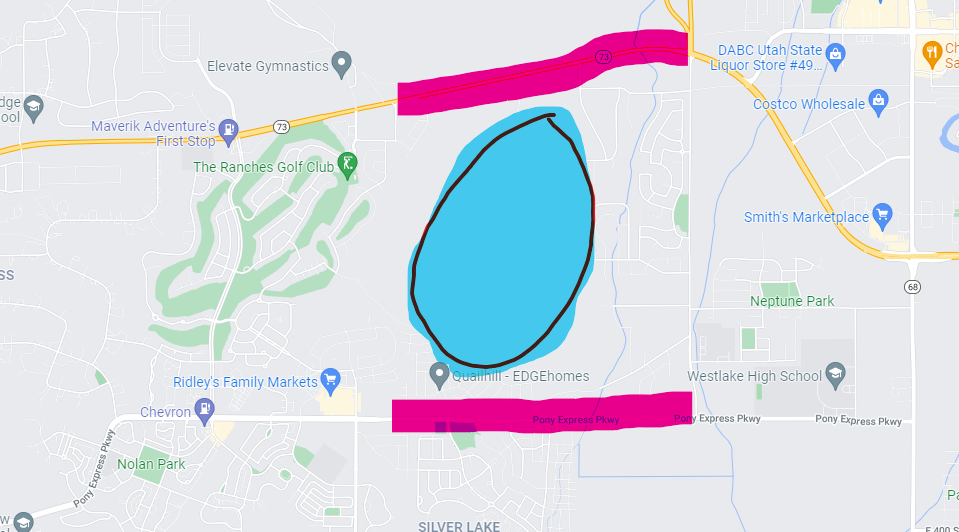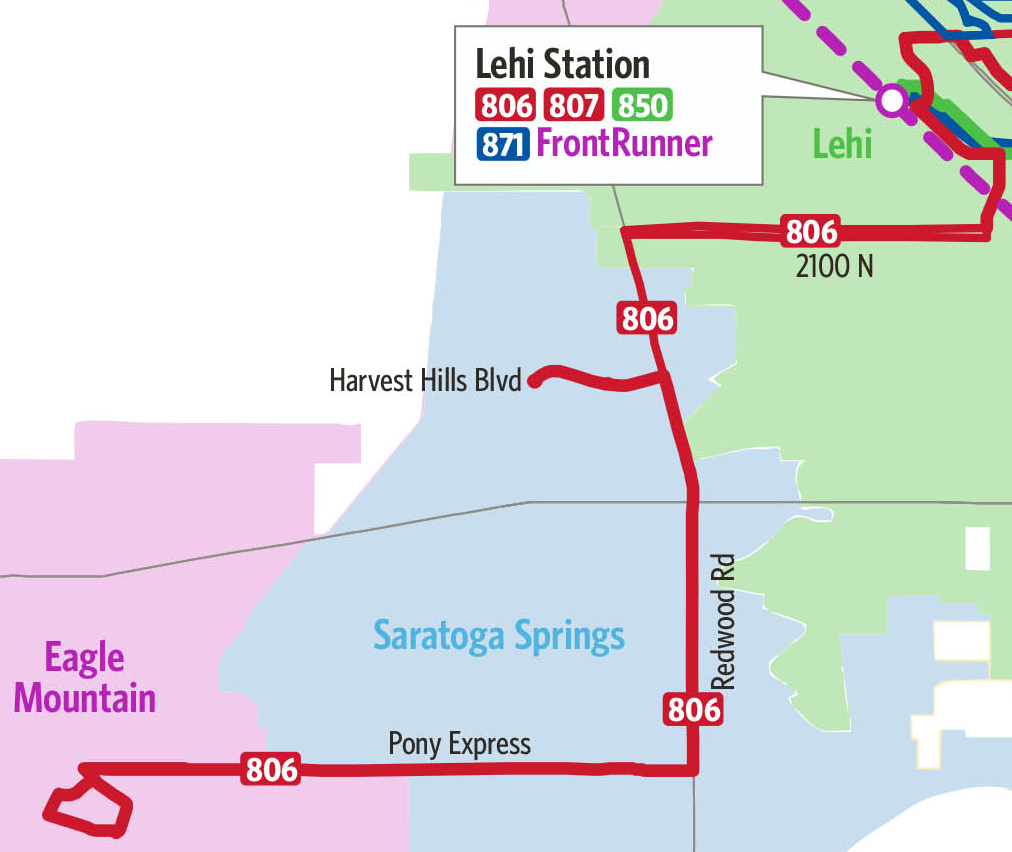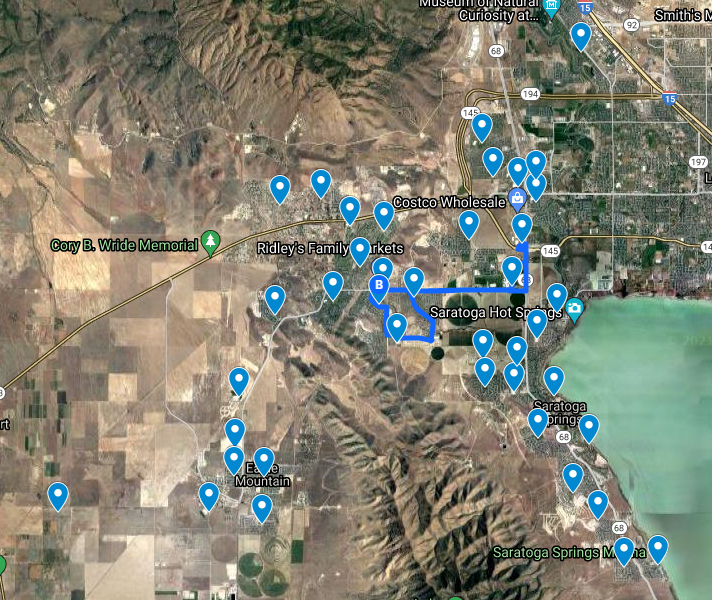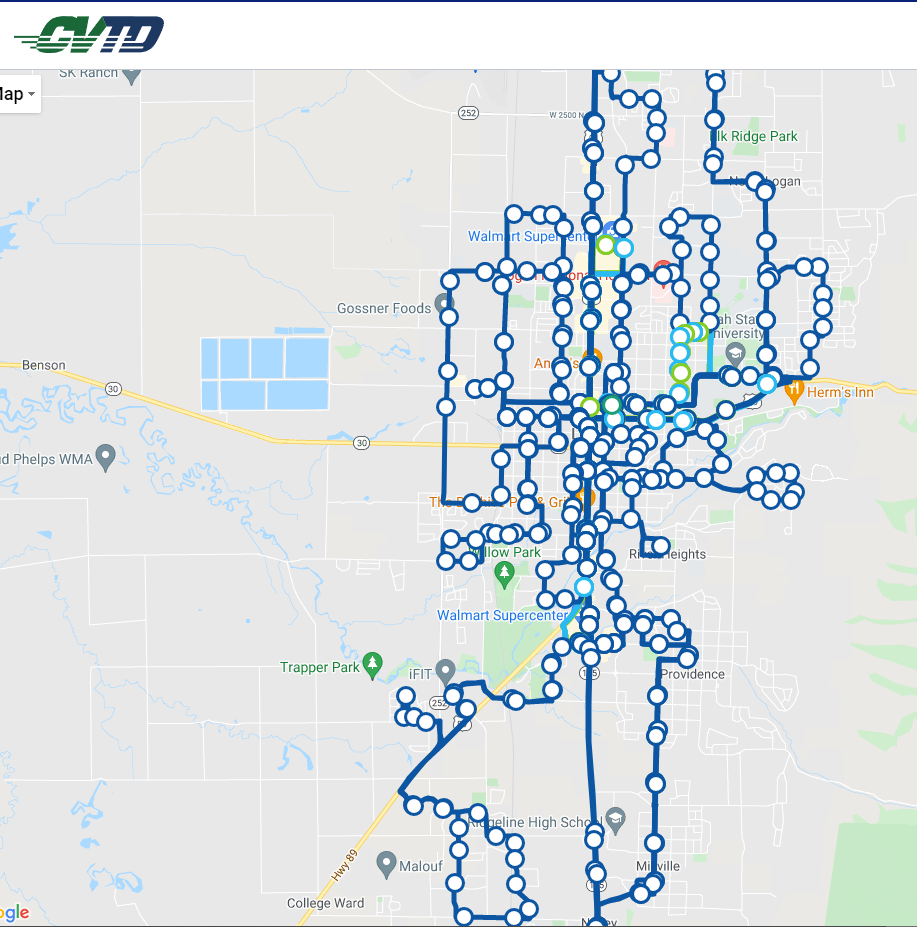
I’m becoming more radical.
Radical often is used in a negative context usually followed by an ideology. I can fully admit I am becoming more radical toward one specific ideology.
Transportation.
I’ve ranted about it before on this blog and on my podcast. I often use the words “(sub)urban hell” to describe where I live. But urban hell and hell are different things. If where I lived was hell that would mean it is not safe to be. I live in a very safe place. The big downside is the fact it is an urban hell. There are 2 roads to get out of my city towards the greater Wasatch Front area.
The highlighted sections of road measure 1.5 miles

The top road highlighted in pink is a 5-lane state highway. No sidewalks on either side. Posted 55 MPH, but people get up to 70 regularly. The bottom road highlighted in pink is actually a nice road. It is 5 lanes and sidewalks on either side. No dedicated bike lanes. It ends at yet another 5-lane state highway (not marked, but it is the 68 running north and south). That big blue area for the longest time was nothing. Just hills of fine Utah sagebrush and dirt. It is now being turned into single-family homes that I would imagine start at $500k.
This setup causes two major issues. These roads are the only option to get in or out of the city. I do not exaggerate that claim. These are your options. Part of that is the geography of the area, but most of it is due to awful planning. This area is growing faster than the city can react. It is one of those last remaining areas close enough to the action but isn’t crazy expensive where you can get a decent-sized whatever for a fair price. So more and more people are cramming their cars onto these two roads. During rush hour, those two 1.5-mile stretches of road will be backed up at the next intersection as an entire city is trying to exit and go to work.
UTA Bus route 806

This is the one bus route that serves my area. Guess how many stops it has along the whole route. If you said 4 you would be right. FOUR STOPS! One line that serves two whole cities has four stops. The bus runs every hour for only four loops. That’s right. Between the hours of 2:30 PM and 6:30 PM, this bus makes four loops. It doesn’t even cover the morning commute, only the afternoon commute.
Now let’s ask ourselves how do people get to one of these four stops. Do they walk? No. Do they ride their bike? Maybe some can, but most can’t. The only way to reasonably get to the bus or back home after getting off the bus is to use a car. Not to mention just a one-way ticket will run someone $2.50. Sure, you can get a month pass for $85 a month, but you still need a car just to get to the bus or anywhere else for that matter. The problem is you NEED a car to get anywhere around here. And there is no option if your car breaks down.

This is a map with points I’ve plotted to indicate 41 points of interest within my city and the city next to me. These 41 points of interest are within at least 1 mile of almost all residential homes in the two cities. Some areas have multiple points within a mile, and many have two stops within half a mile. This is the bare minimum coverage this city should have by bus. The point in the top right would cover getting people to the train station and the other bus lines provided by UTA (what is currently being done by the 806). Everything else is people’s daily lives. Going to get groceries. Going to the doctor. Going out to see a movie. Going to a park. Going to school. Visiting a friend. And even going to work for a lot of people. I even mapped out a potential route. It services two grocery stores. The high school and middle school. Two elementary schools. A family fun center. A shopping center that is currently being built. Many restaurants. Five neighborhoods. And all on a route that could take 30 minutes to drive.
What stops us from having this? Two things. “Who is going to pay for it?” and “Would anybody use it?” Well, to answer that I’m going to show you an example of a city already getting it done pretty well. Cache Valley Transit District Map

This is the bulk of the Cache Valley Transit District. It has something like 15 lines that service a good chunk of Cache Valley and even up into Idaho. I used to drive for them while I was in college. CVTD isn’t perfect, but I would venture to say it is great. They have two types of lines. Hour lines, and half-hour lines. The hour lines go to the outskirts of the valley, and the half-hour lines stay near the center of the valley. Notice how many stops there are. In the city of Logan (which is the major city in Cache valley) it is hard to swing a stick and not hit a bus stop. And everyone rides it. Kids going to and from school. Teenagers going to see their friends. College students getting to campus. People going to work. All ages. All demographics. And best of all, it is free to ride.
HOW ON GOD’S GREEN EARTH CAN THIS BE FREE?! Well, CVTD is fortunate enough that they qualify for a federal grant offered to small metropolitan areas for the purpose of setting up public transportation. In a way, all of America is paying for this valley to have a bus system. But that isn’t where a majority of the money comes from. Most of it is just taxing the locals. There are some cities that didn’t want to pay the tax, so the bus doesn’t go there, even though there are a lot of people in them. The cities are paying for this service, and it allows people to use it without the worry of having enough change, or wondering where they are going to come up with the bus fare. Out of a job, you can get to your interview. The car broke down, you can get to work.
SO IT ISN’T FREE! Well, no, but the cost to each person is negligible and it can be utilized by everyone.